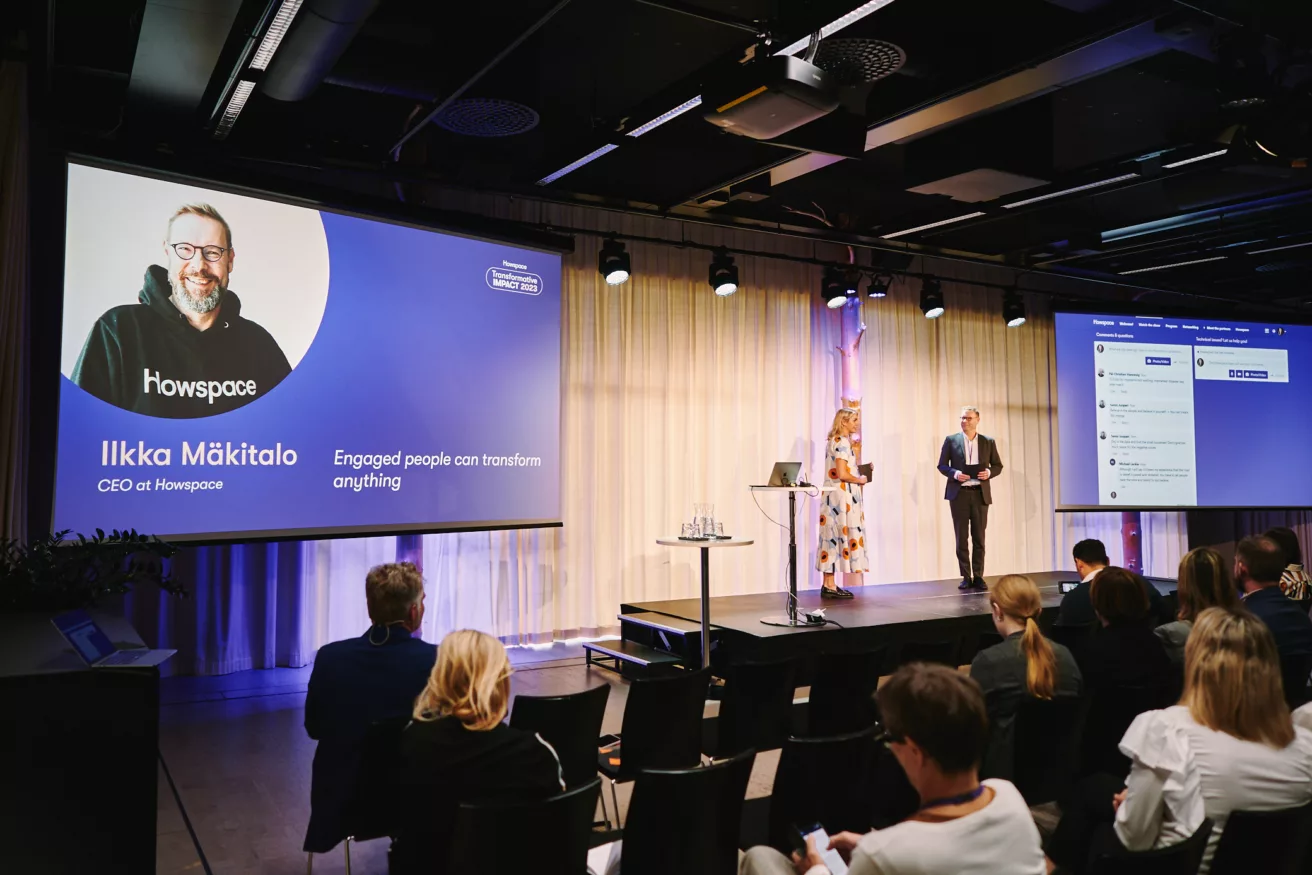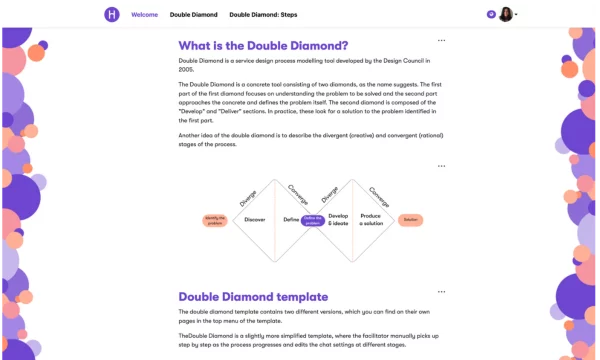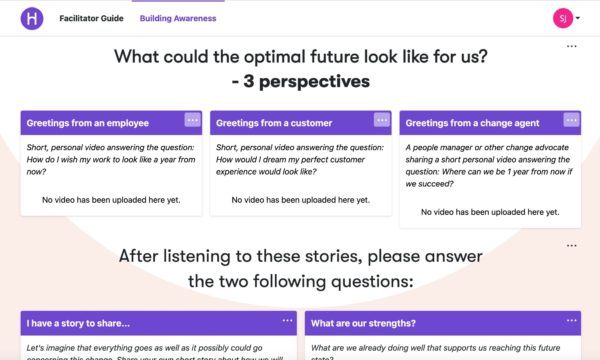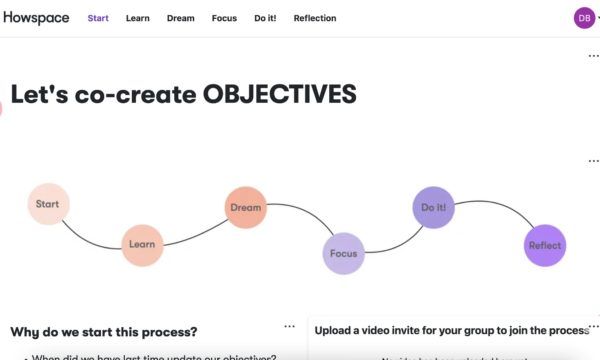
How to design transformative involvement in large-scale transformation
What truly powers a successful transformation in large organizations? Success depends not solely on strategic plans or cutting-edge technology but on the people involved. Placing individuals at the heart of the transformation and considering their needs, insights, and input throughout the journey is crucial for lasting change. There is statistical evidence that the success of transformation is directly tied to the level of involvement of every individual and team in an organization.
However, larger organizations may find it challenging to transition from traditional hierarchies and operating models that were once successful but now hinder adaptability and agile learning. In these environments, it is essential to nurture a culture that embraces involvement, different perspectives, and flexible approaches to change.
This article explores how organizations can effectively design large-scale involvement to harness the transformative power of their people. We’ll examine common challenges and discover the potential of thoughtfully designed involvement in steering organizations toward a future where people are truly engaged, involved, and committed.
Understanding the challenges of involvement
Imagine yourself as a part of a multinational enterprise headquartered in Toronto, with teams scattered across London, Stockholm, and Sydney, each operating in a different time zone and having their own subculture, bringing unique perspectives to the table. Now, envision this organization embarking on a transformation journey. The challenge in this endeavor goes beyond just coordinating meeting schedules, it’s also essential to ensure that every voice from every corner of the organization is included in the change process at the right time.
Moreover, during a change journey like this, you may have heard comments and questions like “Who made this decision?”, “I have not been involved in this.”, “I don’t understand this.”, “This decision doesn’t make sense.”. If these sound familiar, you probably understand the crucial role effective involvement plays in driving successful transformation.
The scenario described above isn’t isolated; it’s a recurring reality for many large organizations today. We at Howspace recognize that the challenges that arise from geographical dispersion and diverse organizational cultures can complicate the change process. That’s why we believe that effective involvement requires a balancing act of logistics, cultural sensitivity, and time management.
Cost of low involvement
Research has consistently demonstrated that employee disengagement can significantly impact transformation efforts. According to Gallup, disengaged employees are absent 37% more often, have 18% lower productivity, and 15% lower profitability. During a transformation journey, this disengagement can manifest as resistance to change, decreased morale, and a lower success rate in implementing new strategies or processes. It’s important to keep employees engaged and motivated during times of change to ensure a successful transformation. The cost of disengagement can lead to more than just a decrease in numbers; it can potentially derail the entire transformation effort.
Therefore it’s crucial to understand and overcome these challenges as they are not just a step in the process but a cornerstone of successful transformation. The following section will explore how to design involvement to navigate these complexities effectively.
Designing Involvement
After understanding the unique challenges that large organizations face in engaging their employees, it’s clear why a strategic approach is necessary. Designing involvement is a critical method to ensure that every person in an organization, regardless of their role or location, is meaningfully involved in change.
Transformative involvement
Designing involvement means intentionally creating environments and processes that foster deep, meaningful collaboration. It involves crafting a transformative process that changes how people think, act, and interact, not just getting them to work together.
At Howspace, we believe that transformative involvement is a journey that we all navigate together, not just as passengers but as co-navigators. This dynamic process has six key aspects:
1 Deep engagement: Enable participants to be thoroughly engaged in the work with each other. This means they are emotionally and intellectually invested in the collaboration.
2 Mutual learning: Encourage all participants to bring their experiences and expertise to the table, leading to a rich exchange of ideas and learning opportunities.
3 Change and innovation: Transformative involvement drives change, whether on a personal level, where participants experience growth and development, or on a systemic level, where it fundamentally alters the operations of a team or organization. It can also contribute to societal change, reshaping social norms and policies.
4 Shared vision and goals: Shared vision is necessary for transformative involvement as participants work towards common goals that are larger than individual agendas.
5 Empowerment: Enable participants to take action, make decisions, and feel confident, as those aspects are the essence of collaboration.
6 Sustainability and readiness for execution: The changes that come about from transformative collaboration are often sustainable and executable. This is because the process involves active participation and mutual learning, which result in innovative solutions that are more likely to be accepted and sustained over time. Collaborating in this way leads to mutual agreement on specific initiatives and tasks that help achieve shared goals.
Practical application with Howspace
How can our platform assist you in the process of designing involvement? Howspace can play an important role in translating the concept into tangible actions.
Shared space for deep engagement and mutual learning
How Howspace can help foster a culture of deep engagement is by providing a unified platform for collaboration. This ensures that every participant, regardless of their role or location, shares the same context and medium for exchange, which leads to a more thorough engagement in the change process.
Moreover, the platform promotes mutual learning by enabling participants to share experiences and expertise with each other. With Howspace, organizations can easily create a learning environment that is customized to their specific requirements, facilitating ongoing collaboration and knowledge sharing throughout the transformation journey.
Facilitating change and innovation
Howspace is a platform that can facilitate change and innovation by providing a safe space to brainstorm, iterate on ideas, and co-create in real-time or asynchronously. This nurtures a culture of experimentation and continuous improvement.
By designing workspaces intentionally, collaboration spaces become creative hubs for ideation and implementation. Every member can contribute meaningfully to drive change, empowering employees to play an active role in shaping the transformation journey. This approach ensures that the transformation effort is truly inclusive and collective.
Alignment and empowerment
Alignment on purpose is a crucial aspect of involvement design when it comes to the transformation journey. By going beyond mere agenda-setting, the platform enables teams to understand and connect with the purpose and the core ’why’ of the change. This ensures that all efforts are united towards a shared vision.
Through features like the Journey widget, Howspace facilitates the alignment of participants towards shared goals. This fosters a sense of purpose and direction and helps participants understand their role in the change journey. The visualization tool also facilitates transparency and accountability, ensuring that everyone is on the same page and working together towards achieving the desired outcomes effectively.
Howspace can also be an excellent tool for participants to feel empowered by providing them with the tools and autonomy to take action, make informed decisions, and feel confident in their contributions. This empowerment is crucial for nurturing collaboration and ensuring that participants play an active role in shaping the change.
Readiness for execution
Utilizing Howspace to drive change promotes sustainability and readiness for execution through collaboration and engagement. The platform is designed to be inclusive, ensuring every employee has a role in the transformation’s success. Through artificial intelligence, collaborative widgets, and interactive features, the platform helps to sustain engagement and align efforts with the organization’s vision. It not only focuses participants’ attention on critical areas but also encourages the exploration of new ideas and monitors engagement levels. This effectively breaks silos and nurtures a cohesive community.
Benefits of purposefully designed involvement
Carefully crafted involvement is a strategic approach that brings multiple benefits. One of the key benefits is increased employee engagement, which leads to a smoother change process and better outcomes. When employees feel valued and heard, they are more committed to the change and are more likely to engage in the change processes.
This transformative involvement translates into a smoother transformation journey, as it encourages early identification of the potential challenges, nurtures a sense of ownership and reduces resistance to change. The outcomes of such involvement are naturally better, as diverse perspectives contribute to innovative solutions that ensure sustainability and adaptability. Additionally, this approach promotes a culture of cross-functional teamwork by enhancing collaboration and communication across different organizational levels and departments.
Ultimately, designing involvement reinforces a culture of continuous improvement and aligns the organization towards a shared goal, making the transformation journey more cohesive and impactful.
Not a one-size-fits-all approach
In wrapping up this article on the exploration of transformative involvement, we’ve delved into the heart of what makes organizational change not just possible but powerful. It’s clear that the key ingredient is the people–engaging deeply, learning mutually, and innovating collectively. This approach isn’t just about adapting; it’s about reimagining the way we work together, ensuring everyone’s voice is heard and valued.
As we’ve established, designing involvement is far from a one-size-fits-all solution. It’s a tailored, dynamic process that requires the right tools, intention, and creativity. Designing involvement is about creating an environment where everyone feels valued, heard, and empowered to contribute to the shared vision. And the payoff? A lasting change that is deeply embedded in the organization’s culture.
To those ready to dive deeper into facilitating transformation and shaping the future of organizational change, we invite you to join our free virtual course, “Facilitating Transformation: From Theory to Practice”. Read more and sign up through the link below.
You might be interested in these as well
View all
Emotional Leadership in Change and Transformations at Different Organizational Levels
Discover the power of emotional leadership in navigating change at different organizational levels.

Gofore joins forces with Howspace as a new strategic partner
Gofore joins forces with Howspace as a new strategic partner to drive human-centric digital transformation.

Make Your Decision-Making More Inclusive and Effective
Participatory decision-making taps into the collective wisdom of your entire workforce. Here’s how to make more impactful decisions in your organization.
Templates related to this topic
View all
Double Diamond

ADKAR: Awareness Stage
